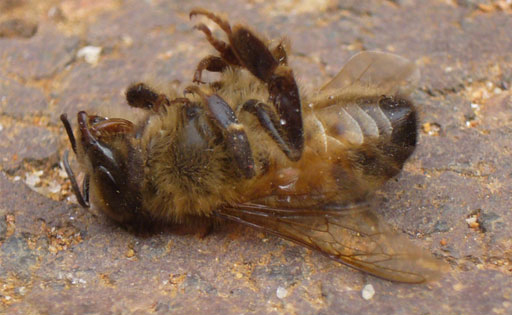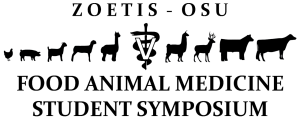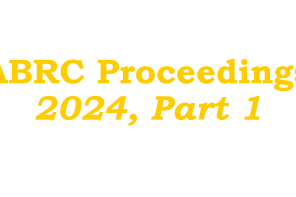By: Gail Wells and Moneen Jones
Two new ways to stop killing bees!
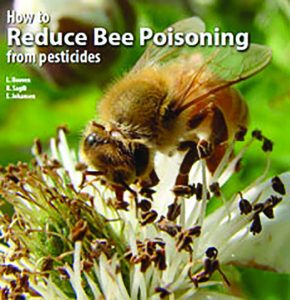 Protecting bees from pesticides just got easier with the release by Oregon State University of a smartphone app that farmers and beekeepers can use to consult a publication when they’re out in the field.
Protecting bees from pesticides just got easier with the release by Oregon State University of a smartphone app that farmers and beekeepers can use to consult a publication when they’re out in the field.
The smartphone app accompanies OSU Extension’s 2013 publication, How to Reduce Bee Poisoning from Pesticides, PNW 591.
Farmers and beekeepers can now remotely consult the publication’s pesticide tables on their phones or tablets. The popular guide lists 150 insecticides, fungicides, miticides, slug killers and growth disruptors – all of them now searchable by trade name or chemical name in the new app.
“It’s a smartphone world,” said the publication’s lead author, Ramesh Sagili, an entomologist and Extension bee researcher in Oregon State University’s College of Agricultural Sciences.
“How to Reduce Bee Poisoning” was first published in 2006. It was expanded in 2013 by coauthor Louisa Hooven, a toxicologist and bee expert in the College of Agricultural Sciences, with an extensive update of the pesticide information.
“We looked at the crops grown in the Northwest,” she said, “and then at all the products that are likely to be used when the crop is flowering—which is when the bees will be foraging. Those were the pesticides we included.”
Products are sorted into three classes: highly toxic, toxic and “no bee precautionary statement on label.” The ratings are based on the cautions and restrictions required by the Environmental Protection Agency and listed on the products’ labels, Hooven said.
In addition, the guide estimates “residual toxicity” for several of the products – that is, how long their harmful effects persist in the environment. That information, which is not required by the EPA and may or may not be on the label, came from Hooven’s extensive search through EPA risk assessment documents and the toxicology literature.
“There was some information on residual toxicity in the previous edition,” she said. “We expanded the number of products quite a lot, so we included residual toxicity information for those products for which that’s known, and we updated the information for the products already listed.”
The guide recommends best practices for managing pesticide applications to protect all bee species—not only honey bees (Apis mellifera), but mason bees (Osmia lignaria), alkali bees (Nomia melanderi) and alfalfa leafcutting bees (Megachile rotundata). These bee species are also managed as agricultural pollinators.
It also tells how to protect native ground-dwelling species such as squash bees, long-horned bees, sweat bees, mining bees and bumblebees.
“Pesticides will affect these species differently than honey bees or other managed species,” said Hooven, “because they have different life habits and are present at different times.”
West Coast agriculture is critically dependent on pollinating insects, said Sagili, who has authored or coauthored four other Extension publications on honey bees.
Oregon beekeepers manage about 70,000 commercial honey bee hives, he said. The bees pollinate about 50 Oregon crops, including blueberries, cherries, pears, apples, clover, meadowfoam and vegetable seed. Sagili estimates the value of these crops at more than half a billion dollars yearly.
The best protection for bees, he said, starts with good communication between grower and beekeeper.
“Pesticide use and bee protection are not mutually exclusive,” he said. “There’s a balanced way to control pests and protect bees, both. We want this guide to be a useful tool for growers and beekeepers to make informed decisions together.”
The publication and accompanying app are available from OSU Extension and Experiment Station Communications (EESC). A user survey is included, and users are asked to complete it to guide EESC in future improvements of the app.
How to Reduce Bee Poisoning was produced jointly by OSU, the University of Idaho and Washington State University. Its cost was underwritten by beekeeper associations in Oregon, Idaho, Washington, and California, and by the Oregon Department of Agriculture.
– Gail Wells
A new program developed by University of Missouri Research Entomologist, Dr. Moneen Jones, offers beekeepers an opportunity to protect hives from pesticide drift. The Missouri Pollinator Conservancy Program (mopollinatorconservancy.com) gives spatial and visual tools to alert pesticide applicators to nearby beehives.
The MPCP is a collaborative effort between the University of Missouri. Missouri Department of Agriculture, and non-profit organization, FieldWatch, Inc. The latter operates DriftWatch Specialty Crop Site Registry, an online mapping tool created by researchers at Purdue University Agriculture and Biological Engineering department to facilitate communication among specialty crop producers and applicators. The latter two are responsible for the data and website infrastructure, whereas Jones is responsible for bridging the communication between all supporters of the project. The program’s partners hope to open communications between farmers, consultants, applicators and beekeepers to protect the more than 400 species of bees in Missouri.
Registry for Apiary Locations
Missouri beekeepers are not required to register the location of apiaries with the state, but using DriftWatch is a good way to let applicators know the locations of beehives and how to contact hive owners. In addition, a placard listing the hive owner’s name and emergency contact information should be placed in a highly visible and prominent location in the apiary. She encourages beekeepers to register their hives on the programs’s website (https://fieldwatch.org/). Participation is voluntary, and beekeepers can limit what information (i.e. map coordinates of beehives) is available through public viewing. Beehive locations are kept confidential by a license agreement between pesticide applicators and use of DriftWatch™. Beekeepers do not need to worry about their personal information being sold or distributed without consent. DriftWatch Specialty Crop Site Registry website offers real-time information for pesticide applicators to consider before applying chemicals to fields near beehives. Diffused pesticides can “drift” from the intended target in one area to another.
BeeCheck Flags
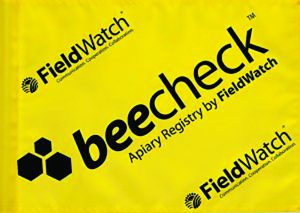 Following beehive registration at DriftWatch™, beekeepers are highly encouraged to purchase large, visible yellow-and-black BeeCheck flags through links on the website that will alert applicators to nearby hives. These flags serve as a visible reminder to farmers and pesticide applicators that honey bees and other pollinators are present in the area.
Following beehive registration at DriftWatch™, beekeepers are highly encouraged to purchase large, visible yellow-and-black BeeCheck flags through links on the website that will alert applicators to nearby hives. These flags serve as a visible reminder to farmers and pesticide applicators that honey bees and other pollinators are present in the area.
We want to help reduce economic losses for farmers and beekeepers by managing row-crop pests and lessening the effect of pesticides on honey bee colonies.
Partners in the program are Missouri Agricultural Aviation Association, Missouri Department of Agriculture, Missouri Farm Bureau, Missouri State Beekeepers Association, Fisher Delta Research Center and MU Extension.
Pollinator Program Received Positive Comments
Early reaction to Missouri’s new initiative to protect beehives and reduce pesticide has been positive. Clayton Lee, vice president of the Missouri State Beekeepers Association, said the new program is a breakthrough and will have a positive impact on all parties involved. “It’s about communication and getting everybody on the same page,” he said. “And, yes, I see positive implications for the cotton production area in the Missouri Bootheel area. There are a lot of beekeepers in that region.”
Consultant Bill Emerine of Crop Tech says farmers do not want to affect bee populations in an adverse way. So far, he hasn’t encountered any situation where a farmer wasn’t willing to adjust his spraying schedule. According to Emerine, the problem occurs when farmers don’t know where beehives are located or who owns them. “Sometimes I’ve asked farmers to wait until later in the day to spray their acreage,” he says. “That usually prevents any damage to the bee populations. I’m really pleased that each side knows what to expect in all of this.” Emerine believes Missouri may have created a blueprint for the rest of the country to follow. “I believe these groups will work together well,” he says. “I don’t think there will be any animosity or resistance.”
Results Thus Far and Future Goals
It has been a little over a year since the program started for Missouri. The goal was to promote dialogue among all industry groups to preserve bees’ and their contribution to value of crops. There has been a 248% increase in the number of participants in the program. Participants now include producers (513), beekeepers (199), aerial applicators (44) and apiaries (456) that have registered through the mo.driftwatch.org site. Without federal regulation or requirements to register bee hives, Missouri beekeepers are demonstrating that the state can solve the problem by themselves.
If your state is interested in participating or developing their own Pollinator Conservancy program, please contact Dr. Moneen Jones at jonesmon@missouri.edu.
Dr. Moneen Jones is the Research Entomologist at the University of Missouri. Her research program emphasis is integrated resistance management of row crop pests, and her extension duties include Director of the new Missouri Master Beekeeping certification program.






